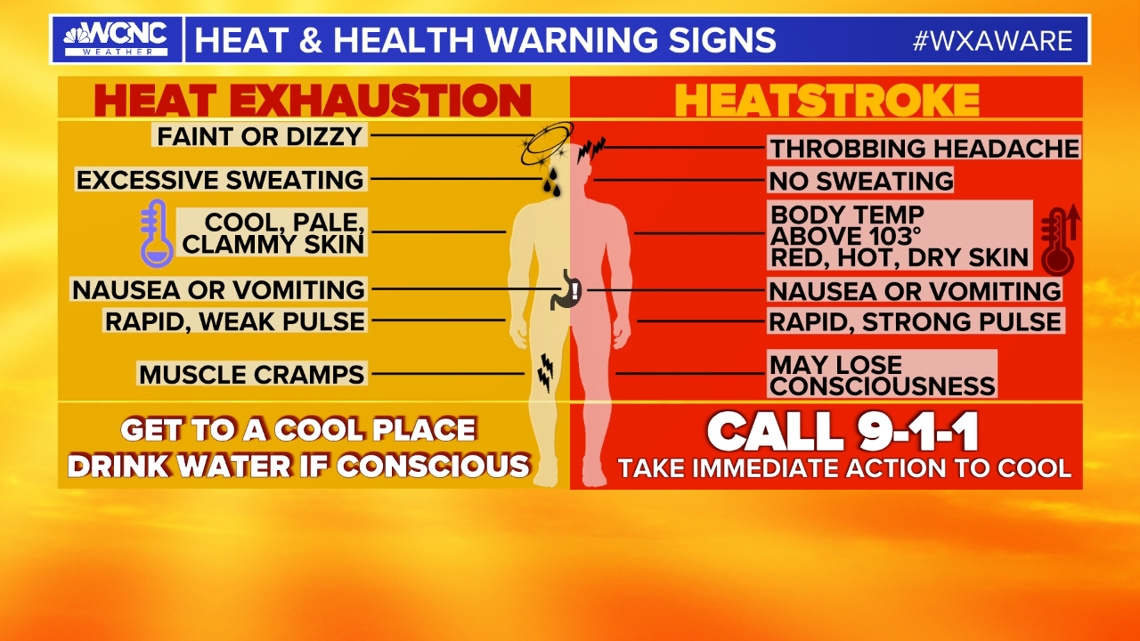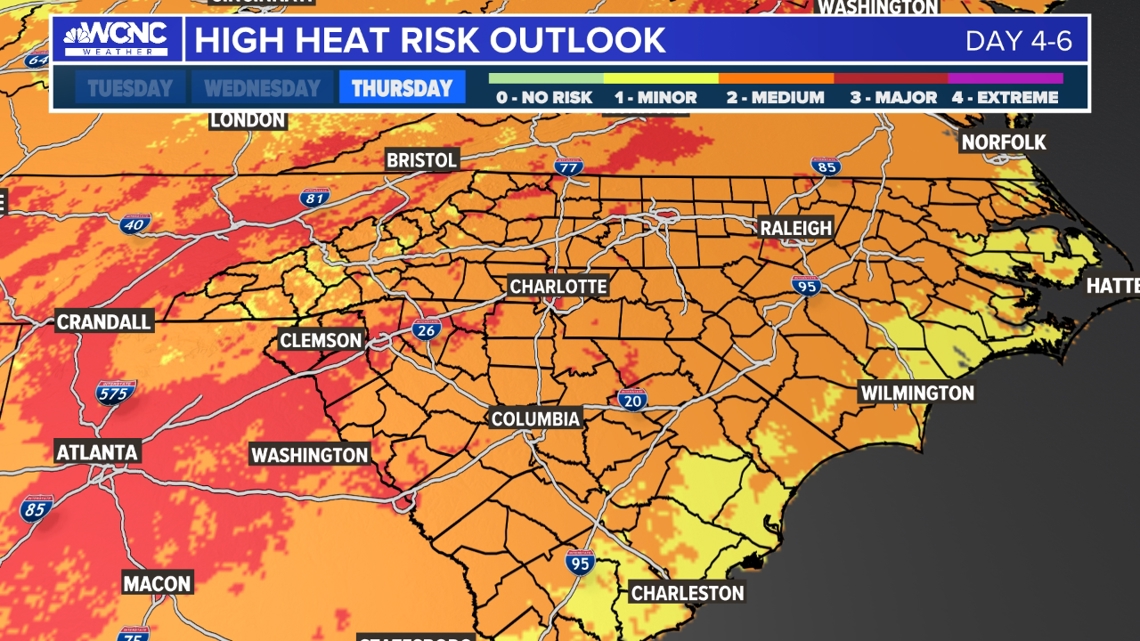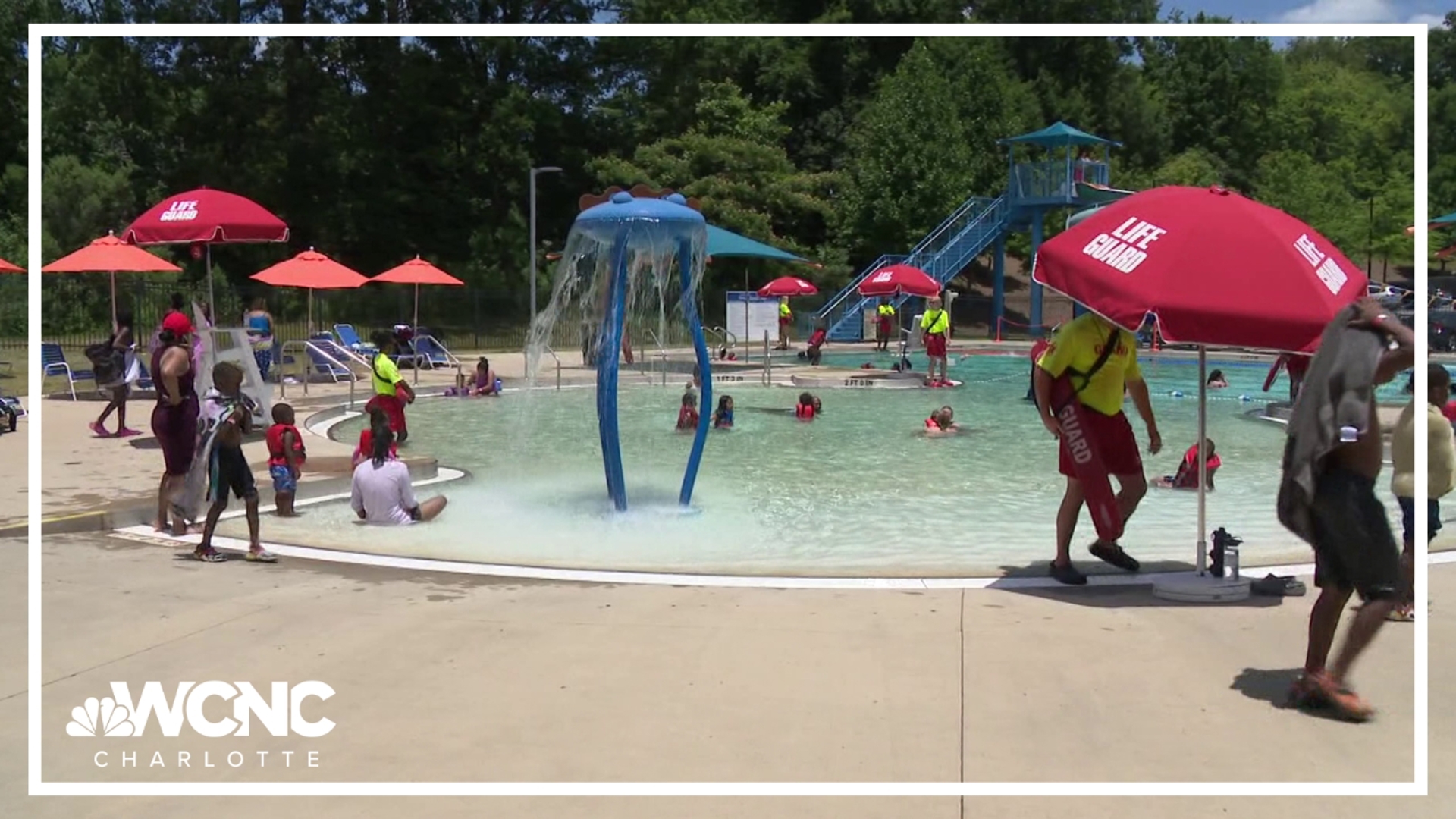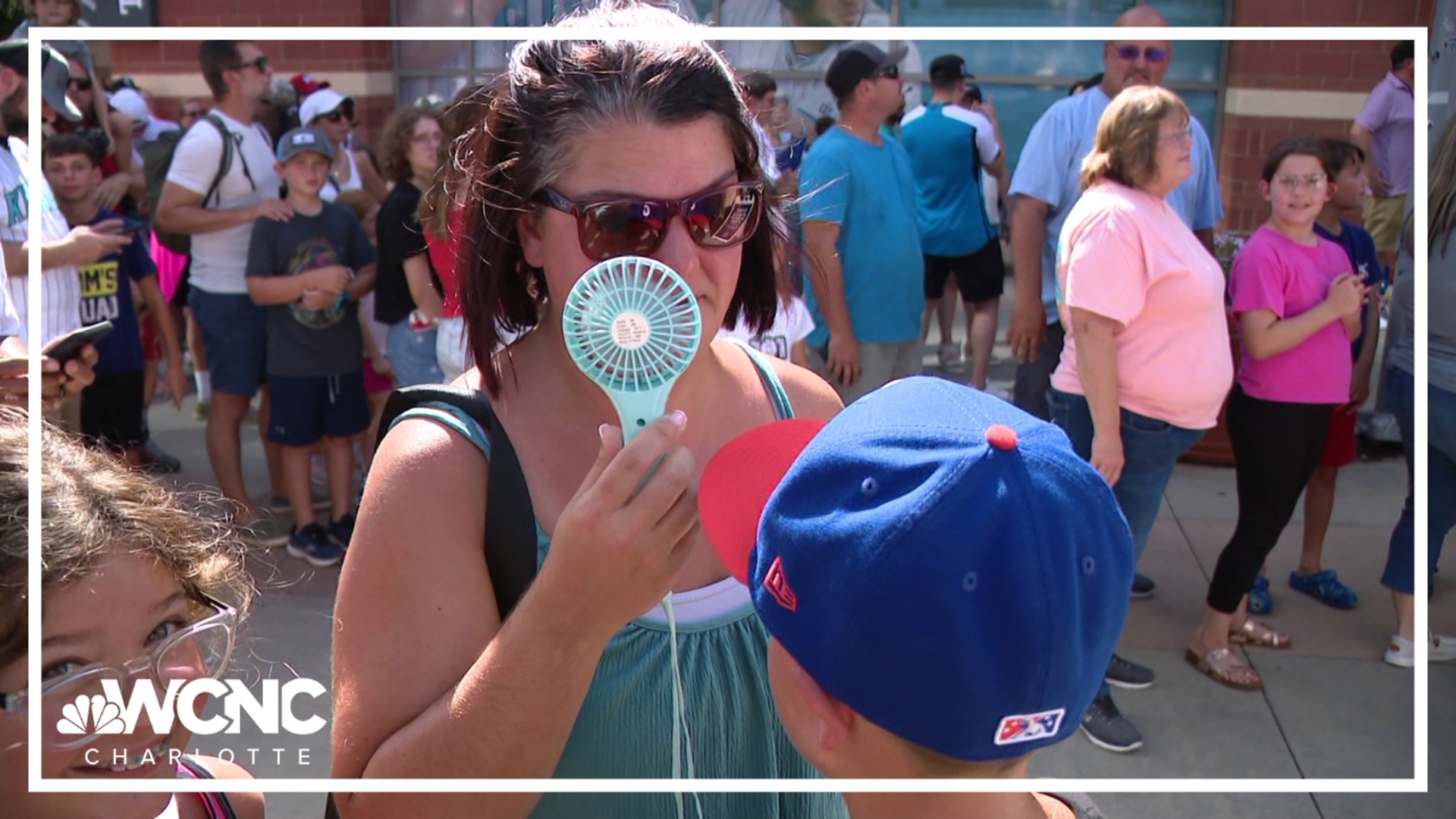CHARLOTTE, N.C. —
Heat Relief
After enduring triple-digit heat Sunday afternoon, the Charlotte area is cooling down tonight. This comes after showers and storms impacted the area with torrential rainfall induced by the cold front.
Relief from the heat is coming for Monday, Tuesday, and Wednesday. Expect cooler than average temperatures and less humid conditions. In other words, temperatures in the mid 80s both Monday and Tuesday. The heat will gradually build into the area by Wednesday with highs near 90.
Heat Wave
Get ready for a very hot July 4th celebration. The heat is on track to return Thursday and continue into the holiday weekend. Expect afternoon temperatures to quickly spike into the mid/upper 90s from Thursday through Saturday. And the heat index will range between 101 to 107 each day.
Heat Impacts
The impacts of high heat and humidity can lead to several heat-related illness such as heat exhaustion, heat stroke, dehydration. It's important to follow a few simple steps to help beat the heat by staying hydrated and choosing water instead of caffeine or sugary drinks. Look for ways to stay cool with A/C or a fan, and limit your exposure to the sun by staying in the shade while outside.
When heat is at its worst
The worst part of the day for people sensitive to high heat and humidity will midday through early afternoon.
A heat index is what the temperature feels like to your body. It's a calculation of the actual air temperature combined with the humidity.
A heat index of 105 for two or more hours will trigger the first heat advisory of the season from the National Weather Service.


Beat the Heat
When the weather is this hot out, the human body struggles to cool itself off.
Heat stroke is the most serious heat-related illness and happens when the body loses its ability to sweat. With heat stroke, the skin gets hot and red, and the pulse quickens as the person's body temperature climbs to 103 degrees or higher. Headaches set in, along with nausea, confusion and even fainting.
This occurs because the body tries to compensate for the heat by pumping blood to the skin. This is intended as a way to cool off. The more a person breathes, the more they lose fluids, becoming increasingly dehydrated. Important electrolytes like sodium and potassium also can be lost when sweating.
Experts say it's important to recognize the signs of heat stroke in others, as people may not realize the danger they're in because of an altered mental state that may involve confusion.
In the case of heat stroke, experts suggest calling 911 and trying to lower the person's body temperature with cool, wet cloths or a cool bath.
Knowing the heat risk
New this year, a joint effort between the National Weather Service and Centers for Disease Control and Prevention is helping to communicate the impact of heat.
The five categories rest on strict science-set numerical thresholds, like the Saffir Simpson hurricane scale that is familiar for its Category 1 through 5 terminology, though the heat version is specific to location, said National Weather Service Director Ken Graham. The thresholds were calculated using local weather data, local climatology that shows what people are used to at certain locations at each time of year, and localized health and medical data for when heat illnesses and deaths show up in the area, he said.


Magenta is the worst and deadliest of five heat threat categories, hitting everybody with what the agencies are calling “rare and/or long-duration extreme heat with little to no overnight relief.”
It's a step higher than red, considered a major risk, which hurts anyone without adequate cooling and hydration and has impacts reverberating through the health care system and some industries. Red is used when a day falls within the top 5% hottest in a particular location for a particular date; when other factors come into play, the alert level may bump even higher to magenta, weather service officials said.
On the other hand, pale green is little to no risk. Yellow is minor risk, mostly to the very young, old, sick, and pregnant. Orange is moderate risk, mostly hurting people who are sensitive to heat, especially those without cooling, such as the homeless.
For the latest weather alerts, download the WCNC Charlotte mobile app and enable push notifications.
Why the heat is so bad
A high-pressure system stationed over the East Coast is causing hot and dry weather conditions. When a persistent high-pressure system brings heat to the same location for multiple days, this is sometimes referred to as being trapped in a "heat dome."
This weather pattern has allowed temperatures to climb across the United States while dramatically limiting the chances of running.
What you can do to manage heat
To help your body stay cool, WCNC Charlotte meteorologist recommend:
- Limiting time outside
- Staying hydrated
- Seeking shade
- Listening to your body
- Using sunscreen
Pools, beaches and air conditioners are some of the ways to stay cool. WCNC Charlotte has also compiled a list of splash pads, community centers and free resources available to help beat the heat.
On Saturday, WCNC Charlotte reporter Anna King headed uptown to see how neighbors were keeping cool.
"Cold fruit, cold water bottles and the pool," Au'Jhanique Law said. "That's it and shade."
Law was enjoying a picnic at Romare Bearden Park, keeping in the shade with hat and sunglasses equipped.
"If we were in the sun, that would be different," she said. "We would probably need a cooler for our water bottles, or a tumbler because it keeps the ice cold."
Mike Starkey was in line for the Charlotte Knights game and commented on the heat.
"You could fry an egg on the sidewalk out here," he said, noting he was "drinking lots of liquids" to beat the heat.
Christina and her family were also in line, with hats and portable fans at the ready. Fortunately, they would stay cool with their seats.
"I'll be in the shade," she said.
WCNC Charlotte’s Weather IQ YouTube channel gives detailed explainers from the WCNC Charlotte weather meteorologists to help you learn and understand weather, climate and science. Watch previous stories where you can raise your Weather IQ in the YouTube playlist below and subscribe to get updated when new videos are uploaded.




